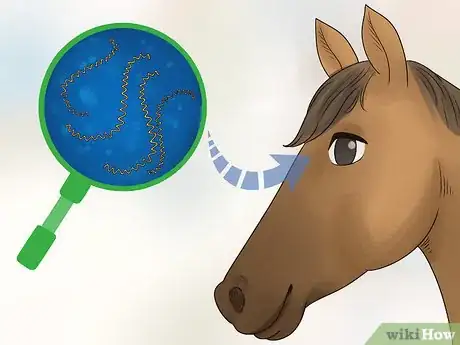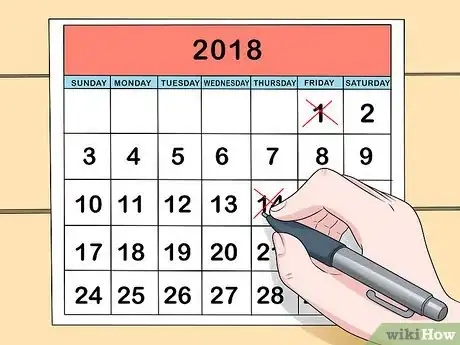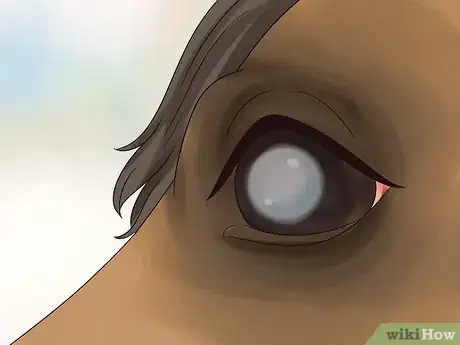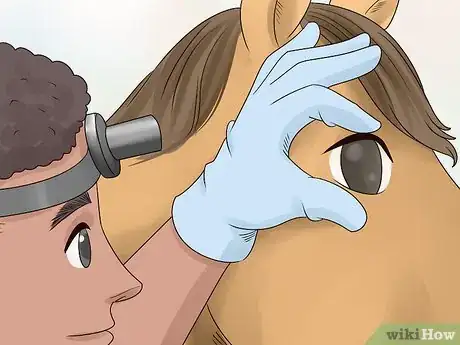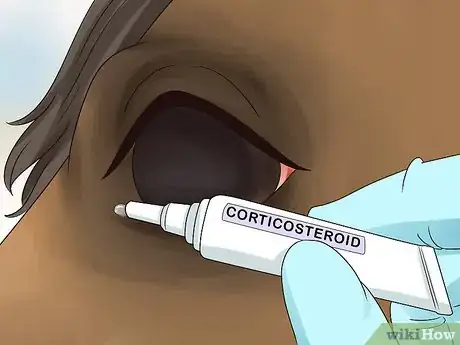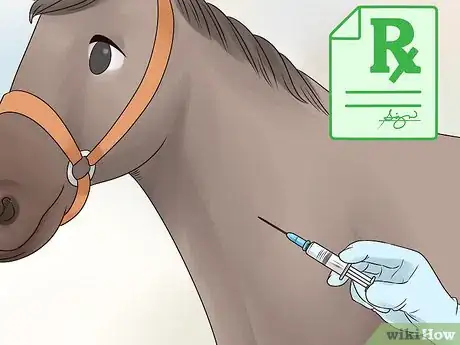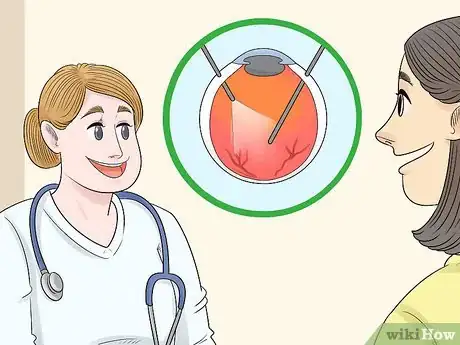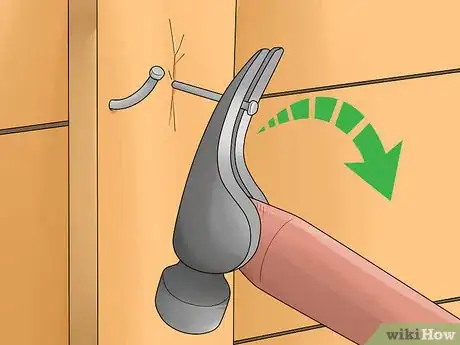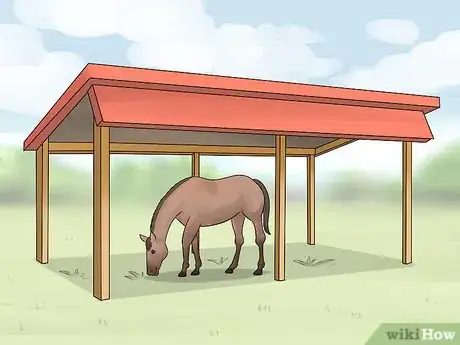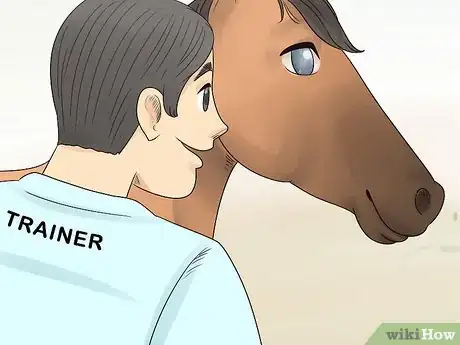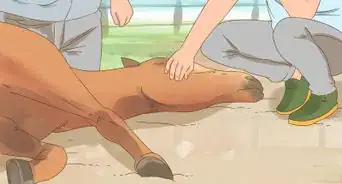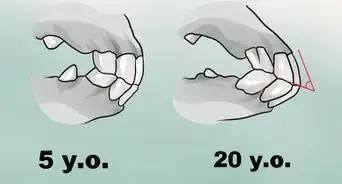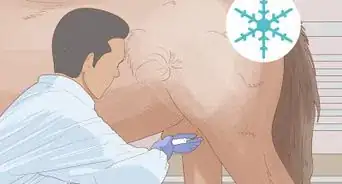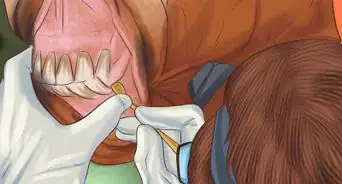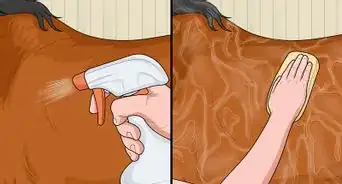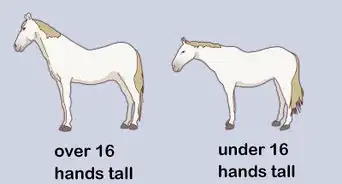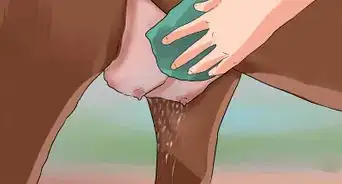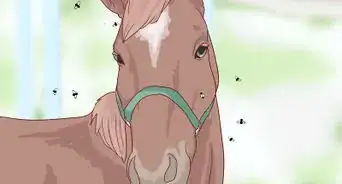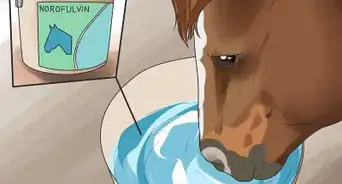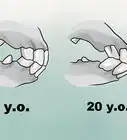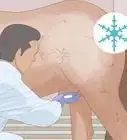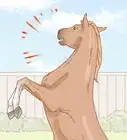This article was co-authored by Ryan Corrigan, LVT, VTS-EVN. Ryan Corrigan is a Licensed Veterinary Technician in California. She received her Bachelor of Science in Veterinary Technology from Purdue University in 2010. She is also a Member of the Academy of Equine Veterinary Nursing Technicians since 2011.
There are 9 references cited in this article, which can be found at the bottom of the page.
This article has been viewed 24,954 times.
Moon blindness, clinically known as equine recurrent uveitis (ERU), is a serious condition and the leading cause of blindness in horses.[1] There is no single cure for moon blindness, but with careful monitoring and vet treatment, it can be managed. Caring for a horse with moon blindness involves working carefully with your vet and adapting training to meet your horse’s visual conditions. With proper care, though, horses experiencing moon blindness can still live happy, full, and productive lives.
Steps
Monitoring Symptoms
-
1Check for causes of moon blindness. There are a number of conditions that may cause moon blindness to develop in a horse. These include being exposed to Leptospira bacteria, parasites, viruses, fungi, or experiencing a traumatic accident, especially one to the head.[2]
-
2Recognize signs of moon blindness. You will see most symptoms of moon blindness in your horse's eyes. Look for inflammation around your horse’s eye, excessive blinking, and/or rubbing your horse rubbing their eyes against other surfaces. If you see these, check for additional symptoms including:[3]
- Redness in the eye
- Cloudiness in the eye
- Swelling around the eyelid
- Tears
- Squinting
- Other changes in eye appearance
Advertisement -
3Track the frequency of your horse’s symptoms. The symptoms of moon blindness are also symptoms that could indicate an irritation or non-chronic infection. To help determine whether the symptoms are because of moon blindness, keep a calendar in the stable and mark off days when your horse shows symptoms.[4]
- Symptoms due specifically to moon blindness often repeat over weeks and months. Recurrent symptoms should indicate whether or not you should suspect this condition.
- There may be sudden flares of inflammation followed by relatively clear and normal periods. Keep in mind that the inflammation may return.
- Seek vet treatment regardless of whether you believe the problem is moon blindness or another irritation. Non-chronic infections and other irritations still need medical treatment.
-
4Monitor your horse for cataracts. Moon blindness can cause some horses to develop cataracts in addition to other symptoms. Cataracts could increase the rate of vision loss and potentially create other complications. Let your vet know if you see any signs of cataracts in your horse.
- Cataracts will cause the eye to become cloudy and progressively more opaque. A whitening or clouding of the eye could indicate a cataract.[5]
- Your equine vet may recommend cataract removal surgery. This will help slow the deterioration of your horse’s vision, but it will not treat or cure the moon blindness.
Seeking Veterinary Help
-
1Get your horse checked by a vet immediately. As soon as you notice symptoms that could be related to moon blindness, call your equine vet. Let them know what symptoms you have noticed, and if any of them are recurring.[6]
- All eye problems should be checked by a vet. Moon blindness can get worse very suddenly, so do not wait to call a vet.
- Your vet will be able to check for potential causes of moon blindness. Some, such as parasitic infection, may be chronic, while others, such a trauma, may cause acute moon blindness.[7]
-
2Apply a corticosteroid. After checking your horse, your vet will likely prescribe a corticosteroid for topical application. The amount of treatment your horse needs will vary depending upon their condition and the brand of steroid prescribed. Read the packaging carefully prior to application, and contact your vet if you have any questions.[8]
-
3Administer medications as prescribed. In addition to or in lieu of a topical steroid, your vet may prescribe medications including anti-inflammatories and immunosuppressive drugs. Take care to administer medication exactly as prescribed. Talk to your vet if you have any questions about how much medication your horse needs, or when it needs to be administered.[9]
- Some eye medications must be applied every two hours. While treating your horse, do what you can to give it its medication at the right time. You may need to ask a friend, vet, or stable groom if they can give the medication when you are unable.
-
4Discuss surgery or implants. In some circumstances, your vet may recommend a surgical treatment called a vitrectomy, or using a slow-release implant of an immunosuppressive. Both of these options should only be carried out by your vet, and both have proven success at preventing symptom recurrence.[10]
- Keep in mind that while surgery may seem expensive, it will likely be cheaper in the long run than using medications. Surgery is also a faster option, and it will prevent long term discomfort for your horse.
Managing Moon Blindness in the Stables
-
1Use a fly masks during an attack. Fly masks can help keep symptoms from getting worse during symptom attacks. If your horse has frequent or severe attacks, they may need to wear a fly mask most or all of the time. Talk to your vet about how often your horse should wear a fly mask, and whether they need one in between flare ups.[11]
-
2Try MSM. Vets generally agree that supplements have little long-term impact on moon blindness. Many horse owners, however, report some success with MSM supplements. These supplements are widely available from hose supplies stores, with serving sizes ranging from 5,000 to 10,000 mg a day depending upon the size of your horse and your vet’s recommendation.[12]
- MSM is a source of organic sulfur that can help with joints, muscles, and immune function.
-
3Remove sharp objects from the horse's stall. Your horse may no longer have strong eyesight. It may accidentally walk into a sharp hook, handle, nail, or other object. Remove anything from their stall that could cause an injury.
-
4Reduce the horse's exposure to potential triggers. If the horse's issue is caused by allergies, you can provide some comfort by switching their stable mates or changing their bedding often. You might also make adjustments to their pasture based on environmental triggers. Decreasing the amount of sun exposure by providing plenty of shade both in and out of the pasture can also help.[13]
-
5Look for a trainer that specializes in blind horses. Even as a horse’s eyesight deteriorates, they can still learn to adapt their other senses to continue riding and living a full life. Your horse will need some help adapting, though. Look for trainers in your area that specialize in working with blind horses.[14]
- If there isn’t a trainer in your area, you can still contact a center that specializes in blind horses and ask them for training tips and advice.
References
- ↑ https://www.smartpakequine.com/content/moon-blindness-horse
- ↑ https://www.vetary.com/horse/condition/moon-blindness
- ↑ https://www.vetary.com/horse/condition/moon-blindness
- ↑ http://www.thehorse.com/articles/18087/moon-blindness
- ↑ http://www.thehorse.com/articles/18087/moon-blindness
- ↑ https://www.vetary.com/horse/condition/moon-blindness
- ↑ http://animals.mom.me/moon-blindness-appaloosas-3937.html
- ↑ https://www.forloveofthehorse.com/articles/uveitis.php
- ↑ https://www.vetary.com/horse/condition/moon-blindness
- ↑ http://www.horseandhound.co.uk/horse-care/vet-advice/understanding-moon-blindness-57310
- ↑ https://www.smartpakequine.com/content/moon-blindness-horse
- ↑ https://www.smartpakequine.com/trends/msm-for-horses
- ↑ https://www.merckvetmanual.com/eye-and-ear/equine-recurrent-uveitis/overview-of-equine-recurrent-uveitis
- ↑ https://www.equisearch.com/articles/training-within-dark-world-horse-blindness
About This Article
To handle moon blindness in horses, start by trying to identify what caused the condition, which could be bacteria, parasites, viruses, fungi, or even a traumatic accident. It's best to get your horse checked by a vet immediately after you notice the symptoms, especially since identifying the cause on your own isn't always possible. After examining the horse, your vet will probably prescribe a topical corticosteroid ointment, and they may recommend other medications. If the condition is serious, your vet may suggest surgical treatment. For tips on recognizing the symptoms of moon blindness, read on!
